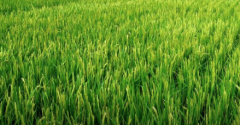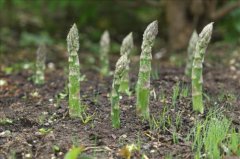Are Sedum plants resistant to drought? How to plant Sedum sedum how to reproduce
Sedum is a succulent plant of the genus Sedum spp. ), which is very suitable for the arid areas of the garden. Growing shallot is one of the easier plant projects with easier maintenance and lower culture requirements. They belong to the genus Crassula, which contains many of our favorite indoor plants, succulent plants, such as jade plants, and old gardens such as Echeveria. Perennials will thrive in hot, sunny places and reward you with simple colors and forms.
Stonecrop succulent plants. Stonecrop succulent plants come from large families, including low-growing, trailing and high-spike flowering plants, which can be up to a foot tall. All Sedum plants have the shape of a rosette and most of them produce flowers above the basal leaves. The leaves are thick and semi-glossy. Most of the Dendrobium plants grown in gardens originated in Europe and Asia and have entered North America and other parts of the world through exploration, trade, etc.-many of them have eventually been naturalized and grow freely in nature (like wild forms, Sedum ternatum). There are also a large number of mixed types. The flowers of perennial pomegranates are rich in sweet nectar, attracting bees, moths and butterflies. A range of colors but usually a series of soft tones. Flowers can be retained in the early winter of plants, and even if they are dry, they increase the size and interest of succulent plants.
Plant Sedum sedum. Planting Sedum is a good start to the gardener project. They can grow in warm sunny places or outdoors. Outcrop plants are ideal for container gardening, rockery, along paths or as part of perennial boundaries. Stonecrop succulent plants rarely have any pest problems and are not plagued by disease. Stonecrop has no deep roots and can be buried shallowly in the soil. They cannot tolerate competition from weeds and other plants, but a small stone helps to reduce these pests. Plants need well-drained soil and are rich in organic modifiers. Seedlings should be watered every few days, but after that irrigation can be reduced and no replenishment is needed in autumn and winter. If growing in a container, use an unglazed clay jar to promote the evaporation of excess water. Overwatering is the most common cause of sedum problems. During the growing season, plants need to apply low nitrogen fertilizer several times.
To breed Sedum plants. Sedum is one of the easiest plants to reproduce, and most members of the family Dendrobiaceae can reproduce similarly. All you need is a leaf or a stem. Planting the stem of Gladiolus in a very hard medium or spreading a leaf on the surface of sandy soil will immediately produce new succulent plants. Plant materials will take root in just a few weeks, forming a whole new landscape.

- Prev

The rice policy promotes the first-stage rice rotation and the second-stage conversion to landscape crops to stabilize rice production and marketing.
At present, the area of rice cultivation in the first and second stages of rice fields in China is about 270000 hectares. Chen Jizhong, chairman of the Council of Agriculture, said in an interview after a press conference on the 24th that according to the estimates of the Agriculture and Food Administration, rice fields must be reduced to about 250000 hectares to stabilize market supply and demand, so the Council of Agriculture promotes "water."
- Next

Asparagus plants: asparagus plants are male and female? How and when to choose to harvest asparagus
Harvesting asparagus is worth waiting for, so you have to start with the seed or crown of the new asparagus bed. In the fourth year after planting the seed, the edible spear has no edible quality. As a result, the asparagus harvest becomes more valuable every year. Planting asparagus from seeds allows people to plant asparagus.
Related
- A course of planting techniques and methods on how to grow carrots
- How to plant the latest tulips?
- Is it better to pick tea in the morning or in the afternoon? When is the best time for tea to be picked? what is the third or fifth tea?
- Launch Yuanxiao Happy combination Haocha + Tea Yuan healthy Taste
- Penghu Tourism "Fireworks 20 Parade with You"
- 2022 West Lake Happiness holds "Digital Revitalization Voucher" and draws iphone13 and laptop.
- Banqiao Fuzhou social houses are designed to change start-up combined with police elimination to create a safe and livable environment
- The convenient measure of "mechanical weeding" in Xinbei has been abused and the Agriculture Bureau has imposed heavy penalties on the illegal land consolidation.
- Changgeng University Joins Hands with Four Memory Factories to Rescue Memory Talent Shortage
- The list of Taiwan's top 100 MVP managers is listed by the Director-General of the Farmers' Association of Sanxia District.

